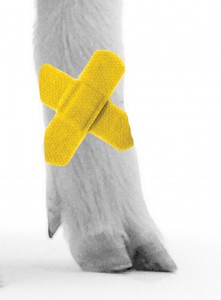A trio of engineering researchers—from the mechanical, materials science, and civil engineering departments—has invented a new architecture for 3-D woven metals that appears to hold great promise for aerospace parts, defense weapons, and other manufactured components. Think: A strong, pliable fabric in 3-D (not 2-D, like your typical cotton shirt) made of metal thread that cools quickly.
Why the excitement? The newly shaped materials are elaborate 3-D lattice weaves of individual metal wires that have two properties coveted by manufacturers. First, they are strong but permeable, so they can have coolants run through them to quickly reduce surface temperatures. This makes them ideal for equipment such as aerospace heat exchangers. Second, they are stiff but have the damping quality of polymers, such as rubber, which means they can reduce vibrations. This makes them attractive for use in many industrial components.
“We envision architected metallic lattices that have the damping quality of polymers and the elevated temperature strength of Ni-base superalloys,” says Kevin Hemker, the Alonzo G. Decker Professor of Mechanical Engineering and a lead investigator. “This would allow us to put them in a jet engine, for example, to reduce vibrations at a very high temperature. Nothing exists now that can do that.”
The collaboration, between Hemker; Timothy Weihs, professor of materials science and engineering; and James Guest, associate professor of civil engineering, started five years ago under a $6 million DARPA grant. The team has filed for patent protection on the micro-architected lattice material and in October received a National Science Foundation grant to continue work on the material’s damping qualities. The scientists also are investigating ways to improve the material’s ability to remember its previous shape, another desired characteristic in some components.
Healing Hydrogel
 The healing hydrogel solution developed in the laboratory of Sharon Gerecht, Kent Gordon Croft Investment Management Faculty Scholar, in the Department of Chemical and Biomolecular Engineering, continues to show promise in skin regeneration and prevention of scarring when applied to burn wounds.
The healing hydrogel solution developed in the laboratory of Sharon Gerecht, Kent Gordon Croft Investment Management Faculty Scholar, in the Department of Chemical and Biomolecular Engineering, continues to show promise in skin regeneration and prevention of scarring when applied to burn wounds.
Gemstone Therapeutics LLC, which licensed the technology from Johns Hopkins University, published a study on Nature.com that measured the efficacy and wound-healing properties of the hydrogel solution in pigs.
“Third-degree burns, which normally heal with thick distorted scars with permanent sensory loss, were healed with complete re-epithelialization [wound closure] and nerve ingrowth,” says Laura Dickinson, PhD ’12, Gemstone’s director of research and development, of the pig study.
The finding is significant because the skin of pigs is anatomically and physiologically similar to that of humans.
In 2015, Gemstone was named as a Maryland Incubator Company of the Year in the life sciences division.
A Kinder, Gentler Defibrillator

Biomedical engineering professors Leslie Tung and Ronald Berger set out to create a defibrillator with less adverse effects on heart tissue and ended up solving a different problem entirely: reducing excruciating pain that can be caused by the devices.
That pain, it turns out, is produced not in the arrhythmic heart but throughout the skeletal muscles that also contract as they absorb the side effects of the massive electrical jolt necessary to bring the heart back into rhythm.
The researchers developed a two-step electrical pulse instead of the conventional single-step pulse used in today’s defibrillators. The first “kinder, gentler” surge preconditions the skeletal muscles for the second larger pulse to come, causing them to contract, but not in the sudden manner they would from a full jolt.
“In essence, we fool the body so as to mask the ensuing shock,” says Berger. “The muscles don’t feel the pain.”





